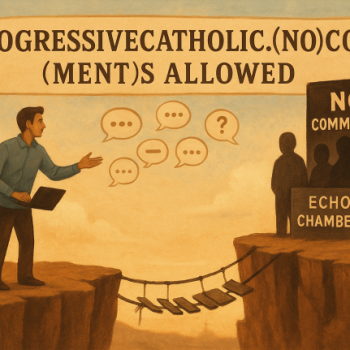GODSTUFF:
‘THE NATIVITY’: GRITTY, TENDER, HUMAN, FULL OF GRACE
The coffee cup in my hand read, “We don’t remember days; we remember moments.”
It’s a quote from the late Italian writer Cesare Pavese, and I pondered it, rolling the idea around in my mind as I sipped mocha java and thought about the new film “The Nativity,” which opens in theaters nationwide Friday.
I saw “The Nativity,” which tells the story of the birth of Jesus from the perspective of the relationship between Mary and Joseph, a couple of weeks ago when the movie studio screened it for members of the press. By sheer happenstance, I ended up sitting next to the same fellow I sat next to a couple of years ago at a press screening for “The Passion of the Christ.”
Apart from my seatmate and the fact that he kept feeding me Sour Patch Kids while I hid my eyes from the carnage on screen, I don’t remember much about the day I saw Mel Gibson’s “The Passion of the Christ.” And I don’t remember a whole lot about the film itself, except for the blood and gore.
But there was a moment in “The Passion,” a redeeming moment (for the film and for me), that is crystalline in my memory.
As her 33-year-old son, beaten beyond recognition and carrying a huge wooden cross, is walking through the crowded streets toward his execution, Mary, who is trying to catch up with him, has a flashback to Jesus’ childhood. In her memory, the toddler Jesus is running through the gravel in their yard and stumbles and falls as his mother rushes to catch him.
I didn’t like “The Passion” because of its unrelenting, graphic violence, but I loved that scene and I think of it often, and I get chills when I do. It was such a lovely, human moment in a retelling of the passion that dwelt far too long on the torture, humiliation and murder of Jesus the man.
In her tenderly gritty and historically precise “Nativity,” director Catherine Hardwicke, whose earlier directorial work includes the films “Thirteen” and “Lords of Dogtown,” dwells long, hard and lovingly in those human moments — tenderly enough and with such attention to detail that the very human becomes the truly divine.
While the story is surely a familiar one, I don’t want to give too much away about “The Nativity,” which is being screened at the Vatican this weekend. But I will share a short scene in the film that seized me, a moment I won’t soon forget, even when the details of the rest of the film and the day I went to see it are lost in time and memory.
In it, Mary (16-year-old Keisha Castle-Hughes of “Whalerider” fame), and Joseph (Oscar Isaac) are alone, camped out by a small fire on their truly arduous journey by foot and donkey from Nazareth to Bethlehem, where Joseph has been ordered by the Roman authorities to return for a census.
Mary, who up to this point in the film has said very little to her new husband, asks him when he thinks they’ll “know” about the baby, will there be “a sign?” She means, when will the baby reveal himself as who he really is? In response, Joseph says he wonders whether he’ll be able to teach the child anything.
My God, doesn’t every expectant parent have similar thoughts? What will my child be like? Will I be able to teach her anything? Will I be a good parent? Will he end up knowing more than me? Will there be a sign that we’re doing the right things?
What a simple conversation. What a profound moment.
I spoke to Hardwicke last week, and she told me that when she leapt at the chance to direct “The Nativity” after reading the script in January, she did so in part because she wanted to “delve deeply into the characters and breathe life into the skin and heart and souls.”
Sure, that exchange between Mary and Joseph is extra-biblical. You won’t find it in any of the Gospel accounts of Jesus’ birth. But you won’t find a lot of the details of “The Passion” in the Bible passages, either.
Pain and suffering, family love and anxieties are methods of humanizing the divine. Still, most cinematic retellings of Bible stories veer into the epic, rather than the humanity of Christ.
“Gibson’s film was a move toward the human, with the emphasis on the passion, the graphicness of what he displayed there,” said Roy Anker, an English professor at Calvin College in Grand Rapids, Mich., and author of the book Catching Light: Looking for God in the Movies.
“On the one hand, there was that; on the other hand, it was more of the same. If we just whack this guy enough, he’ll look divine. That’s what it boils down to,” Anker said. “It’s more spectacle and quantity — that’s the one way of defining the divine, how much bigger than the ordinary the divine is. It’s quite another thing to define the nature of the divine as something other than big.”
Like a baby born to a teenage mother in a stable, for instance.
“Gibson’s film is more of the old majestic thing; if we can just make God superhuman enough . . .” Anker said. “What’s promising about ‘The Nativity’ . . . is that it goes inward, toward the relational. And we get a sense of who these people are as people.”
When I asked Hardwicke what she hoped audiences would take away from her film — in effect what her message was — she recalled not a theme, not the big picture, but a moment.
“I was so struck at the moment when I was there with the Magi [the Three Wise Men] when they came over the hill, and then you see the nativity scene . . . and then suddenly he says his line, ‘The greatest of kings born in the most humble of places.’
“Oh! For the first time it hit me: What a revolutionary concept!” Hardwicke said. “These guys were probably looking for a king in a palace with gold and riches and all the bling and everything. And then they suddenly realized — as I did — that that’s not what it’s about. There’s a baby in the straw. It was an incredible moment, so beautiful and revolutionary and amazing.”
As Advent approaches, may we remember the moments.
© Copyright 2006 Sun-Times News Group















